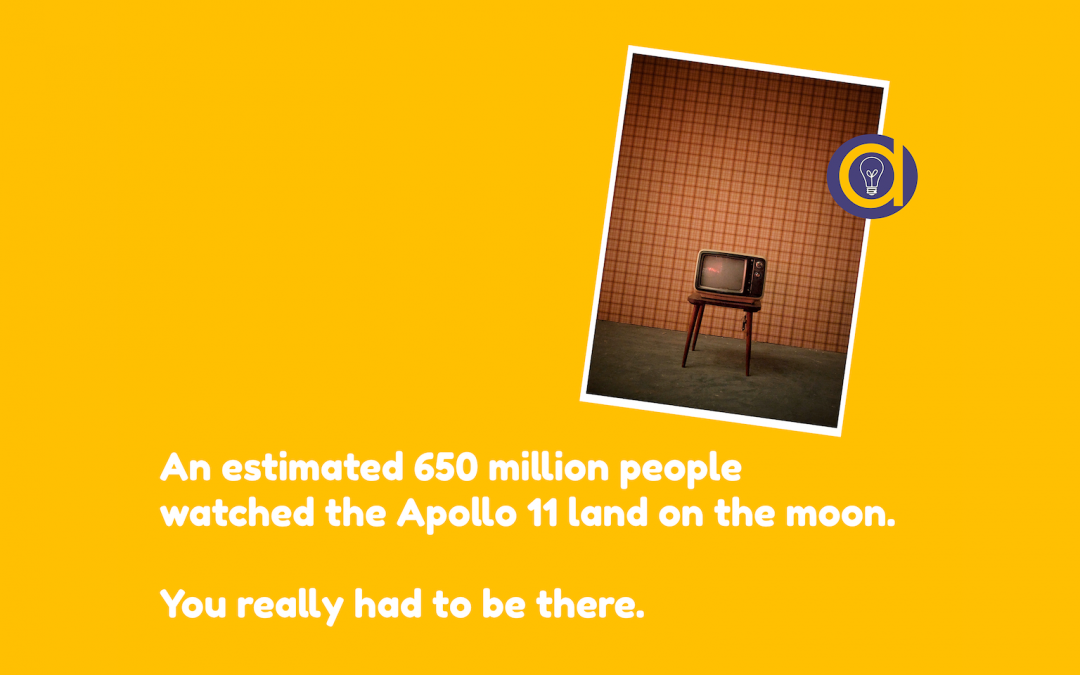Imagine watching the 1969 moon landings as they happened.
Knowing that you’re experiencing the same wonder and euphoria as millions of people around the globe at the same time.
No amount of reruns, simulations or documentaries can reproduce the awesomeness of the shared, synchronous experience.
If we think about this in the context of learning, does this mean that the best learning is synchronous? Not at all – until relatively recently, online learning has worked perfectly well by engaging students asynchronously using discussion boards and blogs.
But when done well, synchronous, shared events can be among the most transformative of all learning experiences. Happily, they’re often the cheapest to organise, requiring only a great facilitator and relevant, well-designed activities.
Extensive research into both modes of online learning has shown that neither is intrinsically ‘better’. While asynchronous interaction can give students more time to reflect and think before contributing to the discussion, synchronous interaction allows for instant feedback and real-time emergence of new ideas.
But relatively little research has considered the emotional benefits that synchronous experiences can bring to online learning. In a reality where learners can access infinite information through the internet asynchronously, real-time discussions can provide valuable ‘one-off’ opportunities for heightened emotional experiences and have a positive impact on their sense of belonging.
The rapid move to online delivery in higher education in response to the Coronavirus pandemic has seen many universities offering up increasing amounts of online content for students to consume asynchronously. But without opportunities for real-time discussion, this filing cabinet approach risks promoting passive consumption of content rather than active creation of new knowledge.
The COVID crisis has also highlighted inequalities in society. In the context of formal learning, this has meant many learners have found themselves without the equipment, internet connection or flexibility to join a synchronous activity. But this doesn’t mean that we should avoid synchronous learning, because real-time activities provide the emotional ‘glue’ that holds a community of learners together.
Even if a learner can’t attend a synchronous activity, the tutor can create opportunities for them to be emotionally involved by submitting their questions before the session – thereby giving the learner more of a vested interest in watching the recording. Awesome tools such as VoiceThread, Padlet and blogs can then extend the discussion emanating from the live session and enable those unable to attend to be actively involved in the learning. The synchronous activities therefore provide key points of focus for the community of learners.
The important lesson from the literature is that tutors should consider a range of factors including learner motivation, type of course content, and available technical support before deciding on the blend of synchronous and asynchronous learning.
But don’t underestimate the power of the real-time event to help learners achieve the desired outcomes. Follow Apollo, and wherever possible incorporate well-facilitated, synchronous activities into a programme of learning.
See also:
- Watts, L. (2018) Synchronous and asynchronous learning: a review of the literature. The Quarterly Review of Distance Education, 17(1), 23-32
- Peterson, A.T., Beymer, P.N., & Putnam, R.T. (2018). Synchronous and asynchronous discussions: Effects on cooperation, belonging, and affect. Online Learning, 22(4), 7-25
You might also like:


